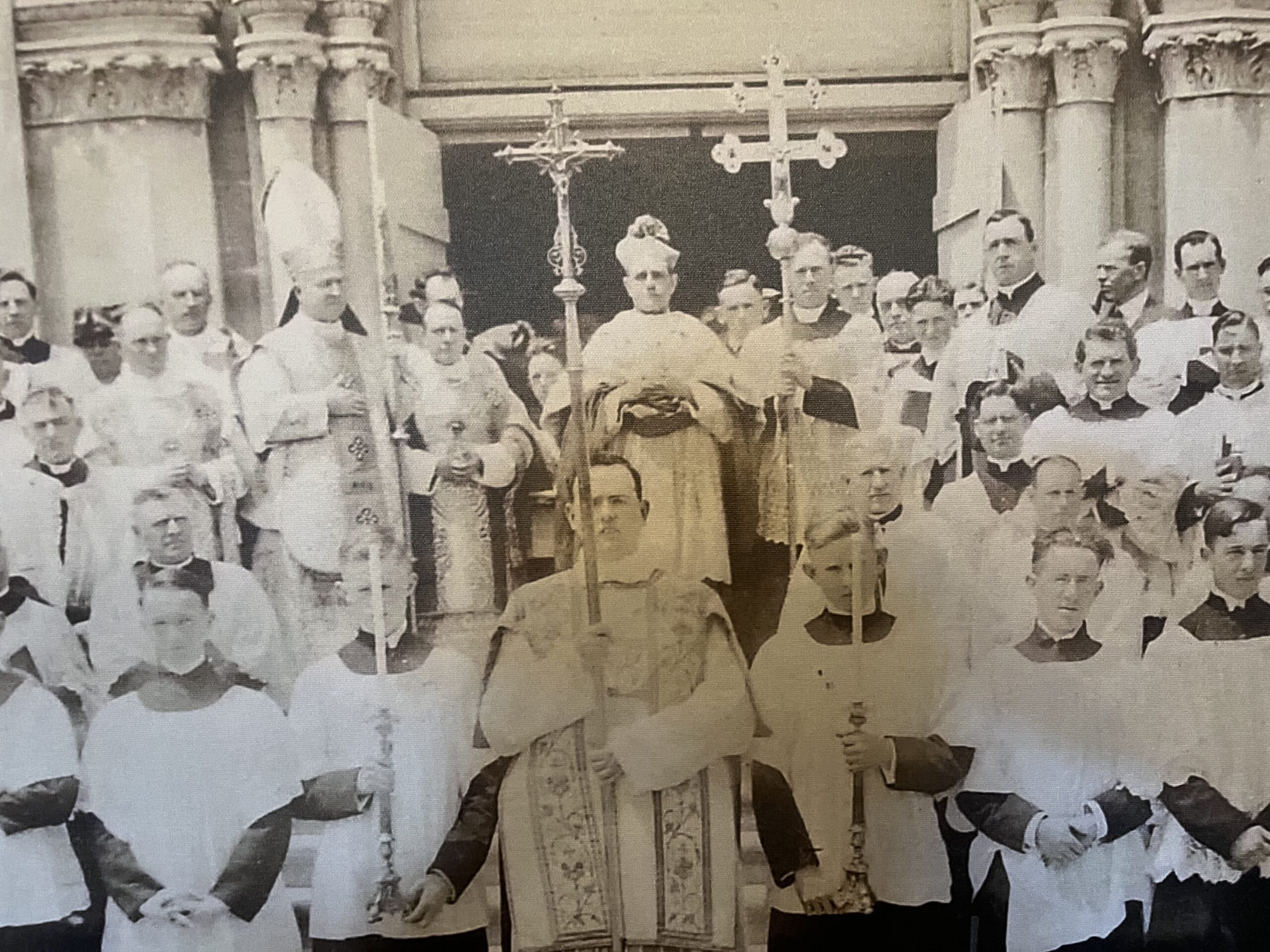p/c Star of the Sea, San Francisco.
The 1950 Carmelite devotional Divine Intimacy reads: “The Father and the Word, mutually beholding Their infinite goodness and beauty, love each other from all eternity, and the expression of this unitive love is a third Person, the Holy Spirit. As the Word is generated by the Father by way of knowledge, so the Holy Spirit proceeds from the Father and the Son by way of love. The Holy Spirit is, therefore, the terminus, and the effusion of the reciprocal love of the Father and the Son, an effusion so substantial and perfect that it is a Person, the third Person of the Most Holy Trinity, to whom the Father and the Son, by the sublime fruitfulness of their love, communicate their very own nature and essence, without losing any of it Themselves.”—DI #186.
Notice the word terminus. This describes not only the procession of the Trinity, but the procession of the traditional Catholic calendar: Advent begins the year in darkness and silence. The Divine Word leaps onto the scene in a subdued but great joy of Christmas. Lent contains repentance as we look to Jesus in the desert. Ultimately, we see Jesus dying for us in Holy Week. Paschaltide has the full triumph of the Resurrection and Ascension. We are currently in the glory of the Pentecost Octave.
What is the rest of the year called? The modernist calendar calls the rest of the year “Ordinary Time.” But the Catholic Calendar has always labeled the remaining Sundays of the year as such: The Third Sunday after Pentecost… the Fifth Sunday after Pentecost… the Eighth Sunday after Pentecost… Why is this important? Look again at that word terminus from Divine Intimacy. The Holy Spirit is “the effusion of the reciprocal love of the Father and the Son” and this should remind you of that phrase by St. Thomas Aquinas: Bonum est diffusivum sui. “The good is diffusive of itself.” In blue collar terms: Goodness can’t help but spread.
Therefore, there is a mission to the TLM calendar not found in the modernist calendar called “Ordinary Time.” Every Sunday that runs from Trinity Sunday through the first Sunday Advent carries within it the title of “Pentecost” in the old calendar. This means every Sunday for second half the year is always in reference to the Holy Ghost. Why is this so important? Because it reveals that the old calendar reflects the Trinity Itself! Notice again how the Divine Intimacy quote above references “the third Person of the Most Holy Trinity, to whom the Father and the Son, by the sublime fruitfulness of their love, communicate their very own nature and essence, without losing any of it Themselves.”
The Trinity comes “out of” Itself, just as does the old calendar!
After the Passion, Resurrection and Ascension of Christ, the entire year exists to make to make converts to Jesus Christ and His Church. This is because “the good is diffusive of itself,” (bonum est diffusivum sui) even in the calendar. The old calendar reveals the missionary spirit of the Church as, again, every Sunday that is contained from Trinity Sunday through the first Sunday Advent carries within it the title of “Pentecost.” The Holy Spirit is the terminus, but the Holy Spirit in the old calendar is also the launching point for the entire year of making converts. This is not found in “Ordinary Time.”
The old calendar represents not only the mission of the Church, but even the Blessed Trinity. In some sense, the entire second half of the year is given to the Holy Ghost as the “Season after Pentecost.” Divine Intimacy continues: “Although all the external acts of God—such as creation, sanctification of souls, redemptions—are common to the three divine Persons “by a certain relation and, as it were, an affinity which exists between the exterior works and the character proper to each Person, these works are attributed to one Person rather than to another.” (Divinum Illud) Thus the work of sanctification which is a work of love, is especially attributed to the Holy Spirit, who is the breath of divine love.”—DI 186.
